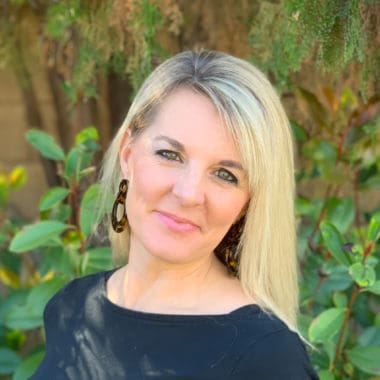This Present Paradise
A Series of Reflections on St. Elizabeth of the Trinity
(Start with part 1 here.)
“Pray to Saint Rita!” I posted on Facebook, along with a story of her life, on her feast day a few years ago. A friend, a kind-hearted Christian doctor and an elder in his large Bible Church who had seen me through my fifth pregnancy, left a comment: “May I suggest praying to the One True God?”
I paused, considering carefully how to answer. I knew this was a common misunderstanding with non-Catholics, and I saw it as an opportunity.
“Of course!” I replied, tapping into my phone. “But we have friends in heaven just as we have friends on earth. And our prayers for each other do not end with death.”
The next day he added under my response: “1 Timothy 2:5.”
I reached for my Bible and found the passage: “For there is one God and one mediator between God and men, the man Christ Jesus.”
This time I didn’t have to think. The Holy Spirit gave me the words immediately: “Yes, there is one mediator and it is Jesus Christ—but God in His goodness allows us to participate in that mediation. Just as you, as a doctor, cannot heal by your own power but administer and share in the healing power of the One Divine Physician. This is what exactly happens when you pray for me and I pray for you.” I thought of him praying with me before Gemma’s birth.
He had no other reply, just a “love” on my comment and our exchange ended. But I’ve thought of that often since. God really could answer all of our prayers on His own—of course He could. But it is precisely because He loves us that He does not leave us as spectators to salvation, sitting on the sidelines. Instead, He allows us to get off the bench and into the game—to pray for each other, to fast and sacrifice for each other, to enter into each other’s lives and longings and sufferings by entering into His own exchange of love with His Father. It’s such a beautiful mystery. It is part of being in this glorious Body of Christ, the Church.
I’ve always found incredible inspiration and consolation from reading the lives of the saints, the players in the end zone—but still very much on the team. I’ve had prayers answered with clear signs that it was through their pleading before the throne of God. And while we might turn to them for a specific cause, looking for an answer or even a miracle, I often talk to them like friends and find them ready to accompany me into even the smallest and most insignificant parts of my day. They model what it means to be Christian in very specific ways. They show us what faith looks like lived out. They teach us to be truly ourselves.
“Follow the saints, because those who follow them will become saints.” – Pope St. Clement I
St. Elizabeth of the Trinity believed that too. Her life and spirituality were very much shaped by her spiritual reading, certainly of scripture (more on that later) but also by avid reading of the writings of saints, including the great Carmelite mystics St. Teresa of Avila and St. John of the Cross. These were the great reformers who had transformed the order centuries before, who had managed to return to a more ascetic and cloistered life and a depth of prayer which would be the exact charisms to draw Elizabeth. She would come to love them, to see her own prayer and interior experience reflected in theirs.
Before she entered Carmel, she was given a book of writings by another woman who had yet to be named a saint, but whose mission had already taken off from heaven, as she had promised before her death: Thérèse of Lisieux. Thérèse had only died two years before, but her biography was creating quite a stir already, and it certainly stirred Elizabeth’s heart. She recognized a kindred spirit in the little saint and her simple spirituality, and Thérèse’s prayer of Oblation to Merciful Love so struck Elizabeth that she copied it several times, and was inspired to make her own offering in November of 1899: “Make me a martyr of your love,” she wrote. The great gift of Thérèse to not only her Carmelite soul-sister Elizabeth but all in the Dijon convent (and before long, to the world) was the blush of Divine Mercy over a horizon clouded with a harsher, more judgmental spirituality choking Catholic France at the time.
Elizabeth would not only embrace little Thérèse as her spiritual teacher but recommend her to others—she simply had to lift the bushel and share her with those she loved. “I am entrusting you to a little Carmelite named Thérèse of the Child Jesus,” she wrote to friends. “Her grace is to expand souls, to launch them on the waves of love, confidence, and abandonment…Will you invoke her every day with me, so she can obtain for you the knowledge that makes saints and gives the soul so much peace and happiness!”
Saint Thérèse herself had had a deep appreciation for the communion of saints—whether in heaven or on earth, she knew that especially when the veils were torn apart in the earth-shattering celebration of the liturgy, there was nothing dividing us from those we loved and who had gone ahead of us—only our own inability to see.
When Elizabeth entered Carmel, she filled out a questionnaire that asked for her favorite saints. St. Teresa of Avila and St. John the Apostle topped the list. Her retreat, “Heaven in Faith” begins with words of Jesus from John’s Gospel: “Father, I will that where I am they also whom You have given Me may be with Me, in order that they may behold My glory which You have given Me, because You have loved Me before the creation of the world.”
…that where I am they also whom You have given Me may be with Me.
If we are with Christ, then we are together in Him—Elizabeth also had a very deep awareness of our communion together, on earth, bound by Christ and one in Him, “our indissoluble bond.” Whether or not we are together in place, she knew that we can be united in the heart of Jesus and that through Him we are not limited by time or space. “Prayer links souls together,” she said, and she would make plans to “meet” her distant loved ones before the Eucharist or the Crucifix, sometimes settling on specific times for a spiritual “Rendez-Vous.”
“Grilles, distance, time, nothing, it seems to me, will be able to separate our souls; for we love each other in God, and in Him, there is no separation!” She was confident of the invisible cords of union.
Wouldn’t it be natural, then, that after she died, she would desire to unite with those of us still making our way? Wouldn’t her intercession increase, her love expand, her heart surge with the wish to draw us to know the love and power of the Trinity within our very hearts? To have what she has, to know what she knows, to love how she loves?
Is that not why I am writing this now, and you are reading it? Is this not some great unfolding story where we—the characters—are closer than we know and the plot lines intersect at every turn?
We’ll talk about her heavenly mission later. But for now, hold this thought: she knew very well what I shared with my doctor-friend:
We have friends in heaven just as we have friends on earth. And our prayers for each other do not end with death.
Read part 18 here.
Image courtesy of Pixabay.





